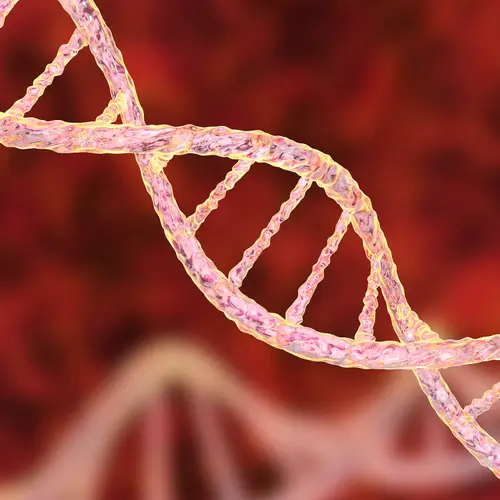If your child has been diagnosed with attention deficit hyperactivity disorder (ADHD), your doctor will probably recommend behavior therapy as a treatment.
No matter how old your child is, experts say it’s the first step toward successfully managing ADHD symptoms.
Behavioral therapy isn’t psychotherapy or play therapy. It focuses on actions, not emotions. It can teach your child how to turn negative, disruptive energy into positive thoughts and actions. And it starts at home -- with you, the parent.
Behavioral therapy also isn’t the same as ADHD coaching or occupational therapy. ADHD coaches may be an addition to your child’s team to help with specific goals, but they’re not therapists or doctors. Occupational therapy helps build skills for daily tasks.
When to Get Started
In general, doctors recommend behavioral therapy as soon as your child is diagnosed with ADHD. If your child is diagnosed during preschool (age 4 or 5), it’s usually the only treatment used. Studies show behavioral therapy works as well as medication in young kids. If your preschooler doesn’t get better or has symptoms that are moderate or severe, then their doctor may prescribe medication.
The American Academy of Pediatrics (AAP) recommends behavioral therapy along with medication for children ages 6 and older. The combined treatment is sometimes referred to as a “multimodal approach.”
With young children, some therapists use play therapy, which uses play as a way for the child to talk about their experiences and feelings. But research hasn’t proven that play therapy or talk therapy ease ADHD symptoms in young kids, according to the CDC.
Parent Training
The primary caregivers for behavioral therapy are the adults who are raising the child -- often, the parent or parents. Parent training teaches them the skills and approaches that they’ll need for this work.
Parent training is the only type of therapy that the CDC recommends for young children with ADHD. The parent will typically have at least 8 sessions with a therapist to learn the strategies that they’ll need and to provide support and feedback.
Stress management training can also be helpful for parents. It can help you find ways to stay calm when you feel frustrated by your child’s ADHD symptoms.
Other people who spend time with your child, such as teachers or caregivers, help too. The idea is to surround your kid with people who will consistently and effectively encourage positive behavior and discourage the not-so-good stuff.
How to Get Started
Some parents choose an ADHD behavioral therapist, but you don’t have to go to a special counselor. There are ADHD behavior therapy classes that train parents. Ask your child's doctor if classes are available in your area. They are sometimes listed under names such as:
- Behavioral management training for parents
- Behavioral parent training
- Parent behavior training
- Parent training
During class, a therapist teaches you how to set and stick to rules and how to respond to ADHD behaviors. Classes usually take place once a week for about 3 to 4 months. Research shows that this training not only helps nix your child’s negative behavior, but it’ll bring the two of you closer together.
Goals of Treatment
Children with ADHD often have trouble sitting still. They can be impulsive and fidgety. That can make it hard for them to pay attention. It can also be disruptive in classrooms and at home. Behavioral therapy teaches your child skills that will help them. They:
- Strengthen good behaviors
- Limit disruptive behaviors
- Teach a child to how to express feelings in a peaceful way
It starts with three basic steps:
- Set a clear goal for your child. Be specific and reasonable. Make sure your child understands what they are supposed to do. For example, complete a homework assignment by a certain time.
- Be consistent with rewards and consequences. Always reward your child for showing good behavior. Make sure they know the consequences for unwanted behavior. And follow through on it.
- Use the rewards/consequence system consistently for their whole childhood. Doing so builds positive behavior.
Specific behavioral therapy techniques include:
- Positive reinforcement. Reward your child for good behavior. Example: If you finish your homework properly and on time, you can play a video game.
- Token economy. This combines the reward and consequence ideas. Teachers often use this method by giving out things like star stickers, but the same principle should be used at home, too.
- Response cost. Unwanted behavior leads to a loss of privileges or rewards. Example: If you don’t do your homework, you lose your computer time.
- Time out. This common consequence is often used when preschoolers use bad behavior. Example: If you hit your sister, you must sit quietly alone for a few minutes.
At School
Teachers may use words to praise your child or provide calming objects that they can hold quietly while still paying attention to the lesson. For older kids, the teacher may use hand signals to communicate privately with the child during class. Other techniques at school, called accommodations, include:
- A different location for taking quizzes and tests
- Moving your child's desk
- Longer test-taking times
- Modified homework assignments
- Social skills classes, special education, or a behavioral plan
- Allowing “escape valve” outlets (running an errand to the library for the teacher, etc.)
- Selectively ignoring poor behavior
- Removing nuisance items such as rubber bands or other distracting materials
What You Can Expect
Used with or without medication, behavioral therapy can help your child curb symptoms of hyperactivity, impulsivity, and inattentiveness. It can help your child do better in school, but you have to stick with it and be consistent. Remember that it takes time to learn new skills. Don’t expect changes right away. Behavior improvements may be slow at first. But with patience, persistence, and teamwork, it should get better.

